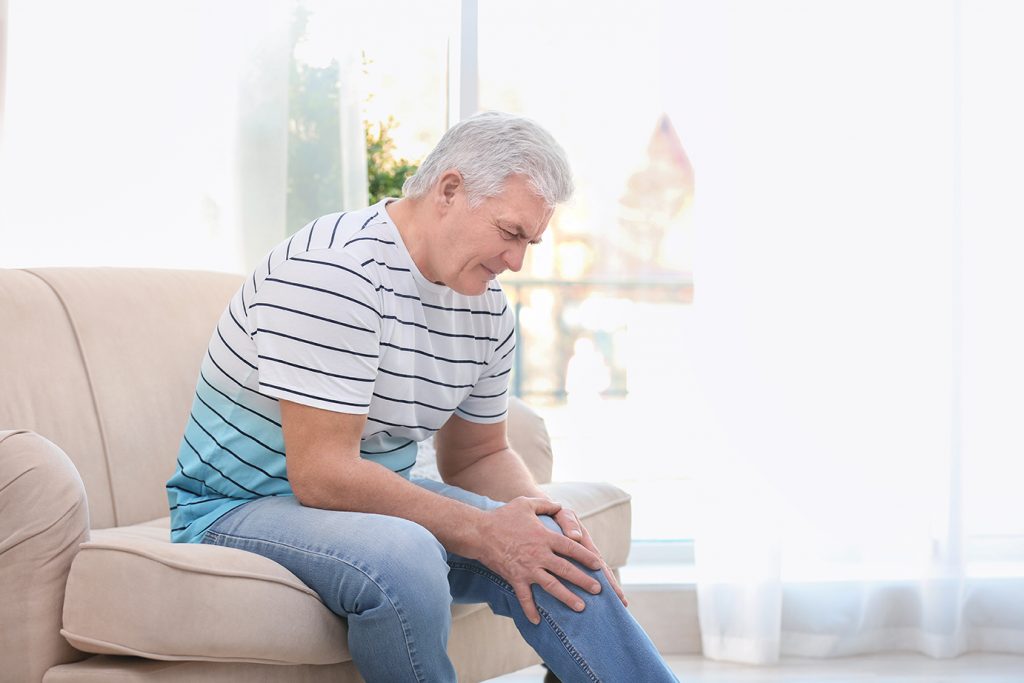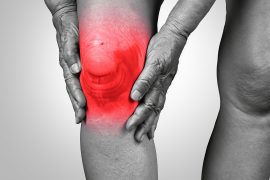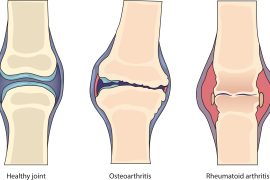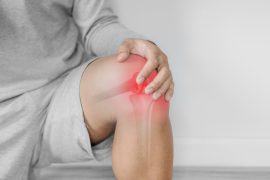The Knee and its Structure
The knee is human body’s largest joint and its healthy maintenance is required to perform most of everyday activities, easily. The knee is made up of the lower end of the thighbone which is called the femur, the upper end of the shinbone which is called the tibia, and the kneecap which is called the patella. The ends of these three bones where they meet are covered with a smooth substance that protects the bones and enables them to move easily (articular cartilage). The C-shaped wedges located between the femur and tibia are menisci. These act as “shock absorbers” that cushion the joint. Large ligaments hold the femur and tibia together to provide stability, the long thigh muscles provide strength to the knee. Large ligaments hold the femur and tibia together and provide stability whereas, the long thigh muscles provide strength to the knee. All remaining surfaces of the knee are covered by a thin lining called the synovial membrane. This membrane releases a fluid that lubricates the cartilage, reducing friction to nearly zero in a healthy knee. Normally, all of these components work in harmony. But disease or injury can disrupt this harmony which results in pain, muscle weakness, and reduced function.
What is Arthritis and different types of arthritis?
The most common disease responsible for disrupting the harmony and causing chronic knee pain and disability is arthritis. Swelling and tenderness in any of the joints of our body, including the knees is referred as arthritis.
Although there are many types of arthritis, mostly knee pain is caused by just three types: osteoarthritis, rheumatoid arthritis, and post-traumatic arthritis.
- Osteoarthritis is an age-related type of arthritis. It occurs in people 50 years of age and older but may occur in younger people, too. In this type of arthritis, the cartilage that cushions the bones of the knee softens and wears away. The bones then rub against one another, causing knee pain and stiffness.
- Rheumatoid arthritis is a disease in which the synovial membrane that surrounds the joint becomes inflamed and thickened. This chronic inflammation can damage the cartilage and eventually cause cartilage loss, pain, and stiffness. Rheumatoid arthritis is the most common form of a group of disorders termed “inflammatory arthritis.”



- Post-traumatic arthritis is a type of arthritis that can follow a serious knee injury. Fractures of the bones surrounding the knee or tears of the knee ligaments may damage the articular cartilage over time, leading to knee pain and limiting knee function.
Treatment of Arthritis
Treatment of arthritis concentrates on providing relief from symptoms and improving function of the joint/knee. You may need to try multiple treatments or combine several treatments from the following to help you in getting relief from your arthritis.
- Lose some weight (in case of overweight or obese patients)



- Exercise: Muscle strengthening around the knees through exercise restores stability of the knee joint and reduces pain. Stretching of muscles through exercise aids in maintaining the mobility and flexibility of the knee joint



- Pain-killers: These include over-the-counter paracetamol, naproxen, diclofenac, etc. However, these should not be continued for more than 10 days without your doctor’s consultation.
- Corticosteroid or hyaluronic acid injections directly in the knee: Corticosteroids act as powerful anti-inflammatory agents whereas hyaluronic acid is a kind of lubricant in the knee.
- Alternative therapies such as topical counter-irritant creams containing capsaicin, acupuncture therapy or supplementation with glucosamine and others can sometimes help to improve arthritis symptoms.
- Physical or Occupational Therapy can also aid in teaching you ways of performing routine activity through exercises or alternate ways of performing routine work.



- Using braces: Devices such as braces can either transfer the weight from the sides of the knee affected by arthritis or even support the entire knee.
- Surgery: When every treatment from the above options fail to provide relief from arthritis of the knee, your doctor can recommend surgical options such as arthroscopy (removing the debris in the joint through a tiny telescope and other small equipments), osteotomy (altering the alignment of the knee by changing the knee’s shape) or total knee replacement (where the natural worn out knee joint is replaced by an artificial knee joint made of metals or plastic).



Usually, the treatment of arthritis is dependent on the specific type of arthritis present. But, sometimes the patients may need to try several different treatments, or combination of treatments before they determine what works best for them. However, in most cases, an exact diagnosis increases the chances for successful treatment of arthritis. After undergoing treatment, the doctor may recommend some physical therapy to help the patient regain strength in the knee and to restore range of motion making it possible to perform daily activities more effortlessly.




